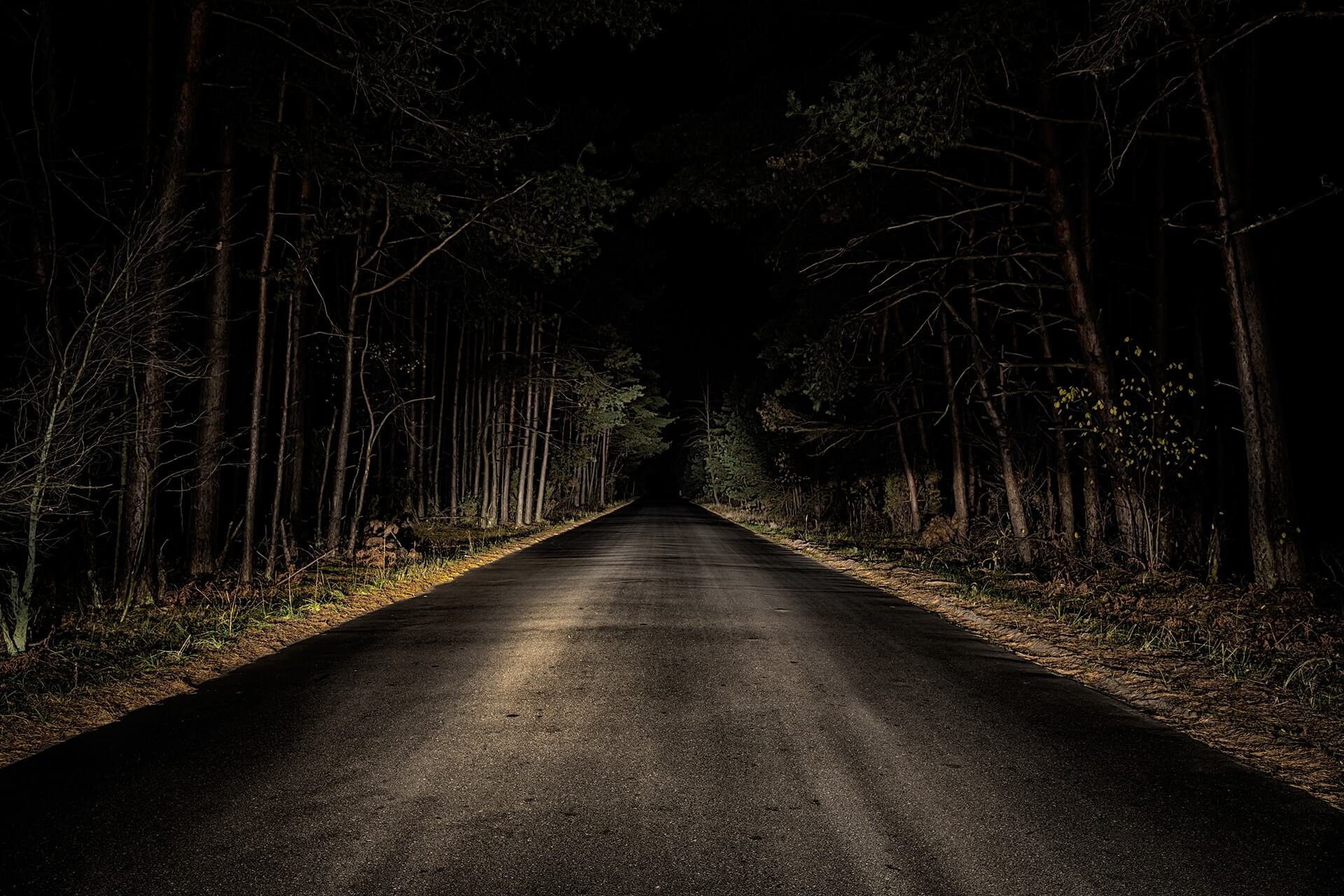The clocks went back last week and it’s the spookiest night of the year – the darkness has arrived.
Whether it’s the trick-or-treaters or adjusting to less daylight, there’s a greater chance of having an accident on Halloween than other times of the year1. Our claims data shows, the number of collisions at crossroads increases by 81% on Halloween compared to the rest of the year1. Yikes!
But it’s not just scary costumes out in the streets, we’re now approaching the most difficult time of the year to drive. Overall, there’s a 14% increase in car accidents between October and November2.
To help you get through the depressing autumn and winter roads, we put together some tips for staying safe whilst driving in the dark.
Reduce your speed
Reduced visibility means less time to react if something unexpected happens. As you would in any difficult driving conditions, like heavy rain or snowfall, reduce your speed to spot potential hazards in the dark.
Know how to work your lights
Learn how to use your lights in different conditions. Turn your dipped headlights on when it gets darker, and if it’s really dark, you need your full beams to see the road better. Full beams are very bright so switch back to dipped headlights every time you see a car approaching you so that they don’t get dazzled.
Make sure you do regular checks on your lights, it’s illegal to drive without properly functioning front and rear lights. If possible, dim your dashboard lights and reduce any reflections inside the car as well.
Don’t stare at oncoming cars
When your surroundings are dark, any light seems brighter than usual. Try not to look directly at the headlights of oncoming cars; the glare can impair your vision and make those few seconds very dangerous.
If the glare is bad, keep looking ahead at the road but focus on the white line markings on the left side to stay in position. If you really get dazzled, slow down but don’t disrupt the traffic behind you.
Keep your windows clean
Dirty windows or mirrors affect your visibility in any lighting but when it gets dark, you really don’t need any more challenges so make sure your windscreen washer stays topped up.
The cold weather increases condensation on the inside of your windows so use the air-con to steam up and get rid of the haziness.
Watch out for pedestrians and cyclists
Driving around vulnerable road users always requires extra attention but cyclists and pedestrians can be nearly impossible to spot if they’re in dark clothing and aren’t wearing any reflective accessories. What you can do is lower your speed and stay alert.
Animals won’t be in reflective clothing for sure but you could look for a pair of eyes – many nocturnal animals, like raccoons, have eyes reflective in the dark.
Other good tips for driving in the dark
- Get your eyes checked and make sure your glasses aren’t causing extra glaring.
- Stay well-rested and don’t drive if you feel sleepy.
- Beware of potholes and slippery roads as you might not spot them in the dark.
- Keep a bigger distance between you and other cars.
- Allow more time for your journey to avoid rushing.
How are you finding the shorter days on the road? Has the clocks change changed your daily drives? Share with us below.
1 Analysis of ITBL customer claims from 2015-2018 per million miles driven. E.g. for every million miles driven there are 4.5 claims on average caused by rear-end collisions throughout the year, and there are 5.9 cases on average on Halloween specifically.
2 Analysis of ITBL customer claims and driving data from 2015-2018.
Leave a Reply
You must be logged in to post a comment.
